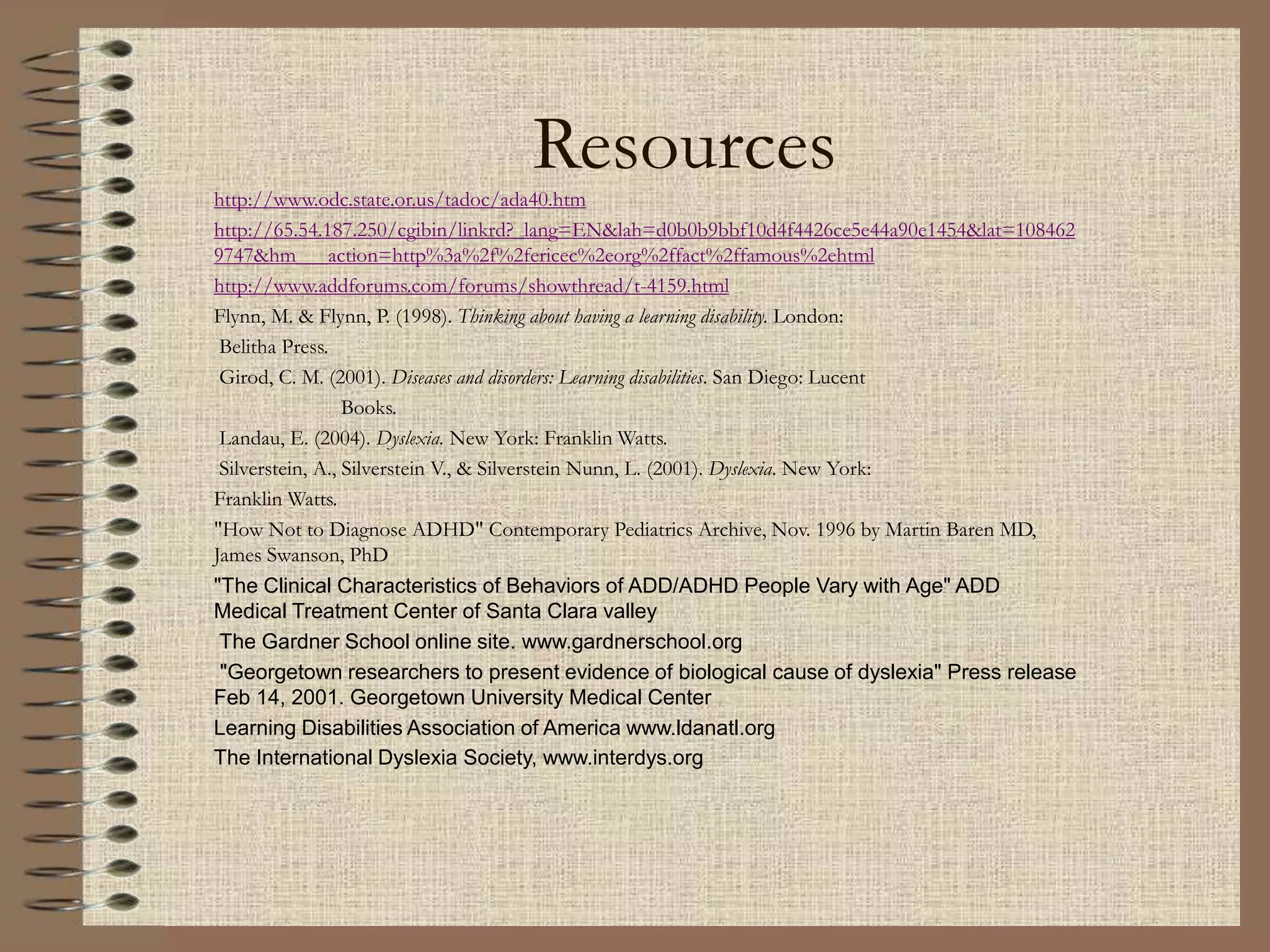This document discusses learning disabilities, including definitions, types, causes, rates of occurrence, and characteristics. It defines learning disabilities as difficulties processing, organizing, or applying information. The main types discussed are dyslexia, dyscalculia, dysgraphia, dyspraxia, central auditory processing disorder, non-verbal learning disorders, and language disorders. Causes are presumed to include hereditary, medical, environmental, and teratogenic factors. Learning disabilities are estimated to affect 15% of the US population or 6-8% of school-aged children. Characteristics can include uneven abilities, average or above intelligence, and difficulties that appear in academic settings. The document provides information on diagnosing and addressing specific disabilities like
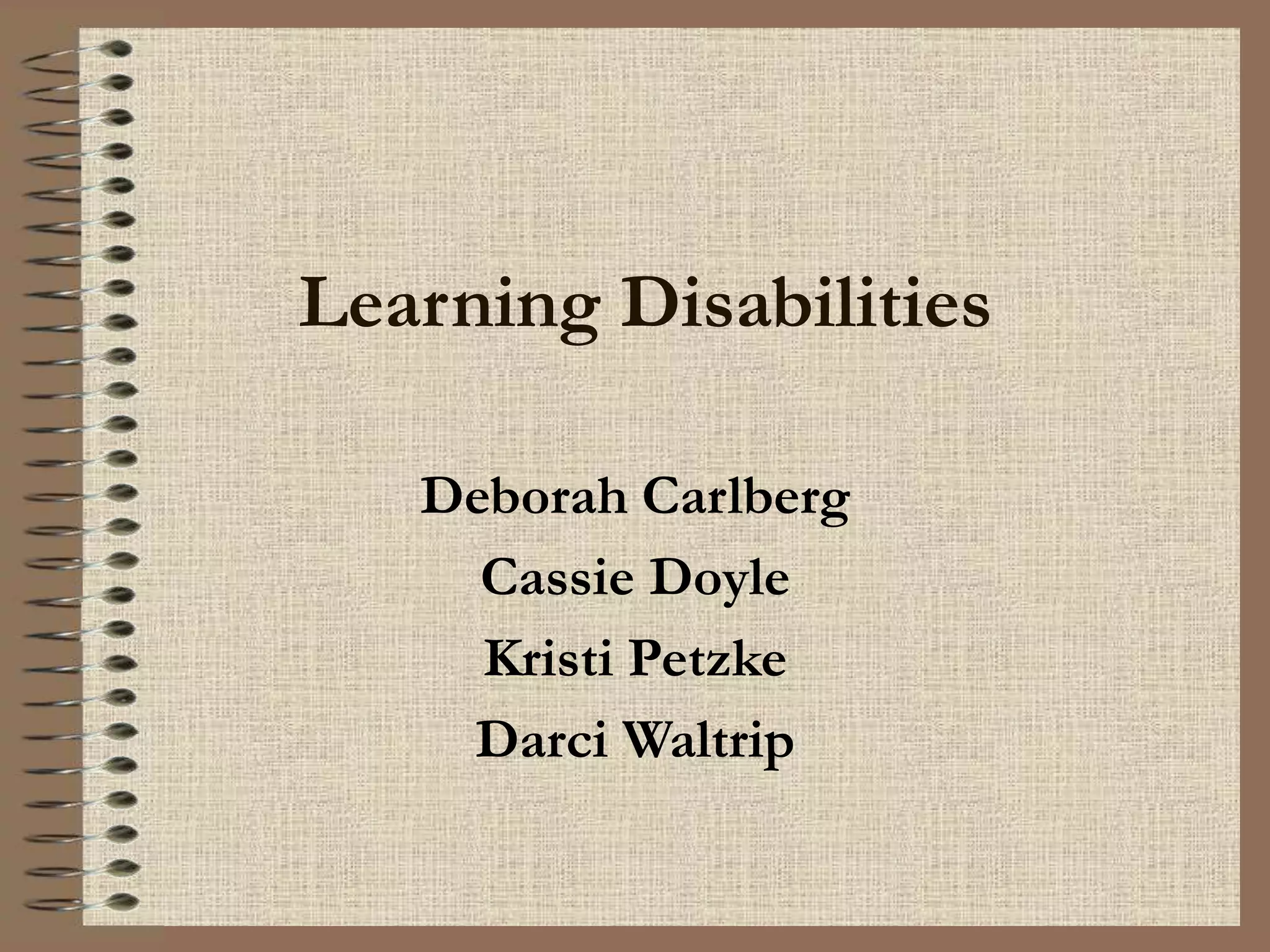
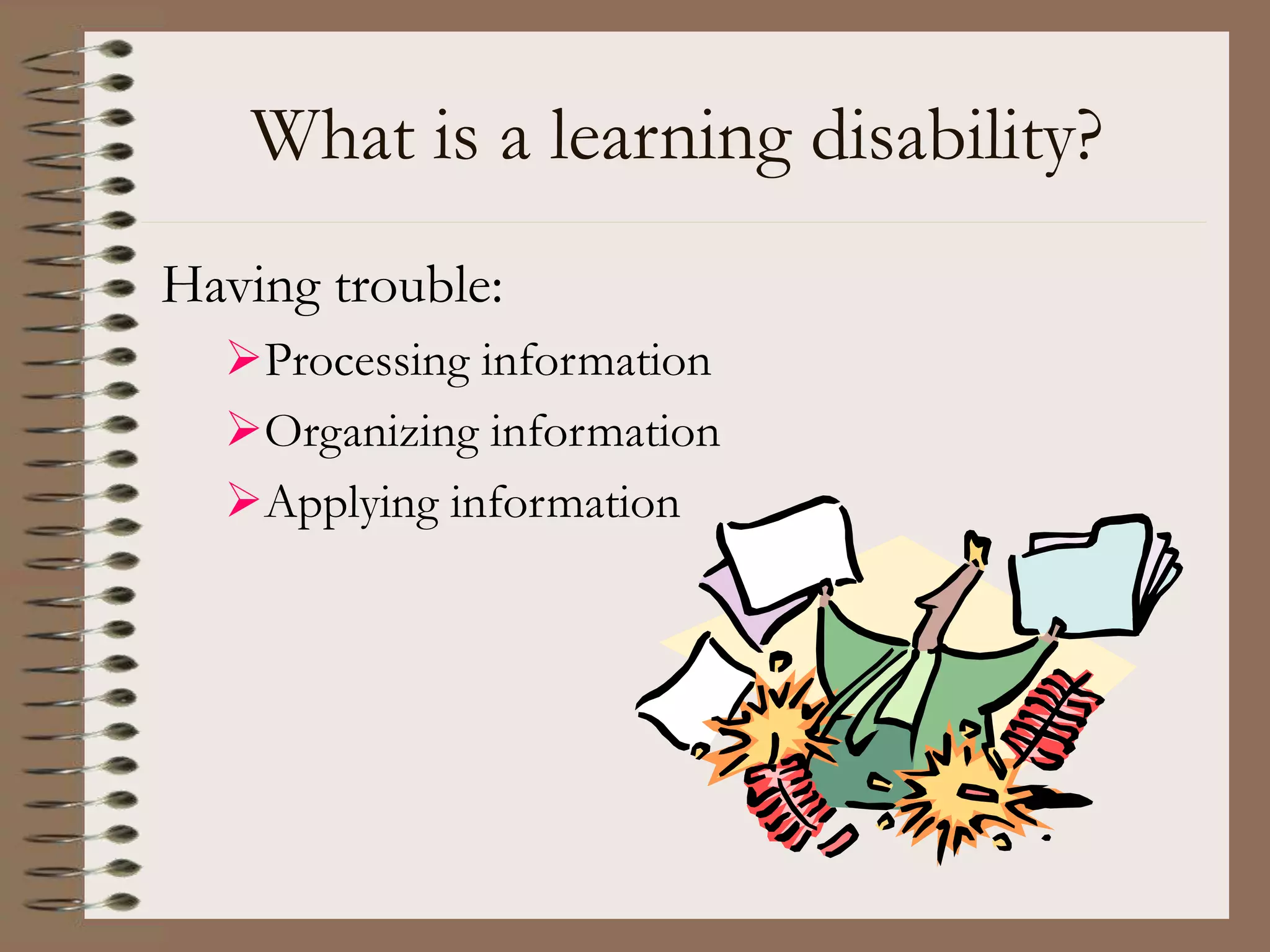
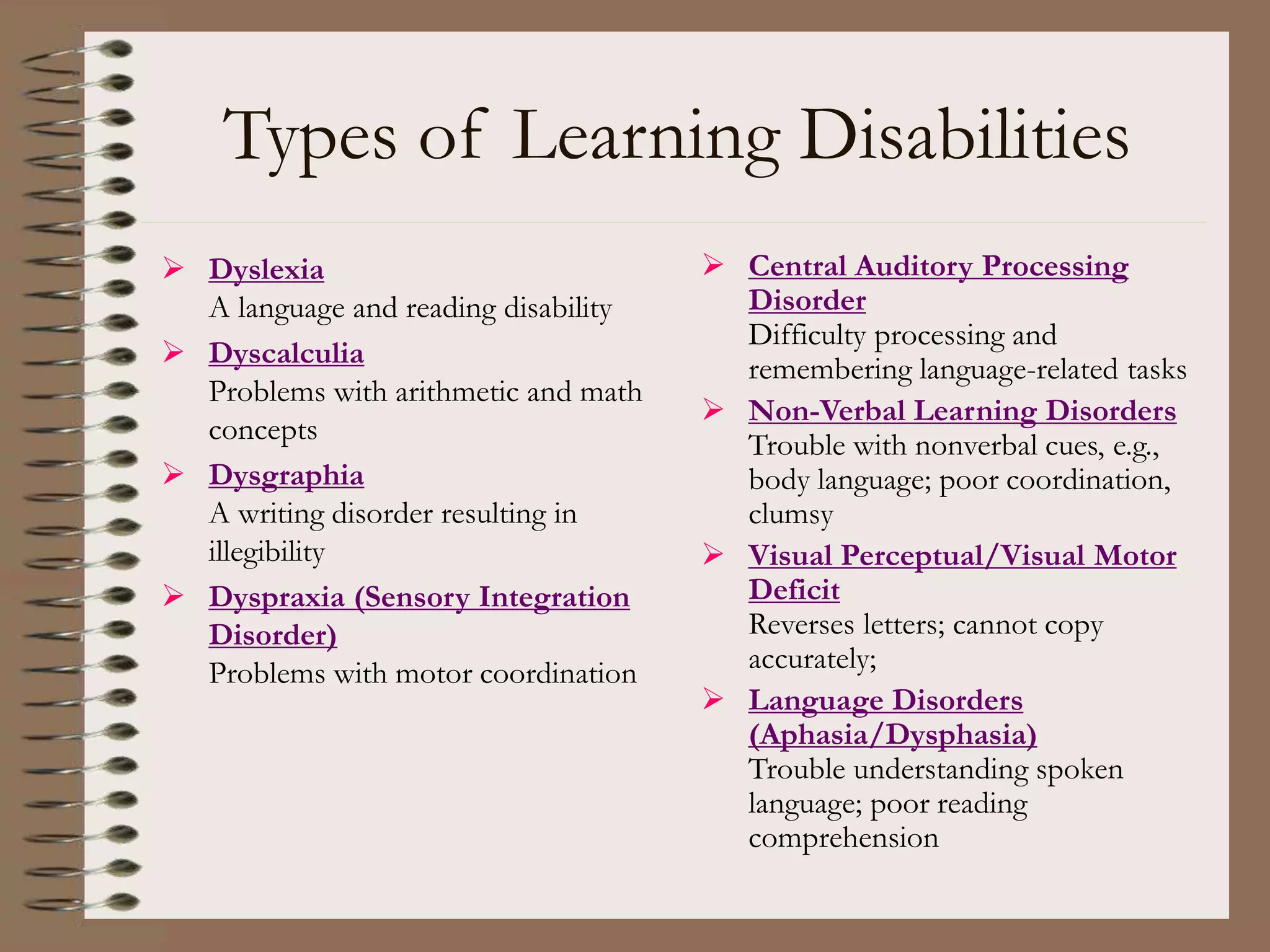
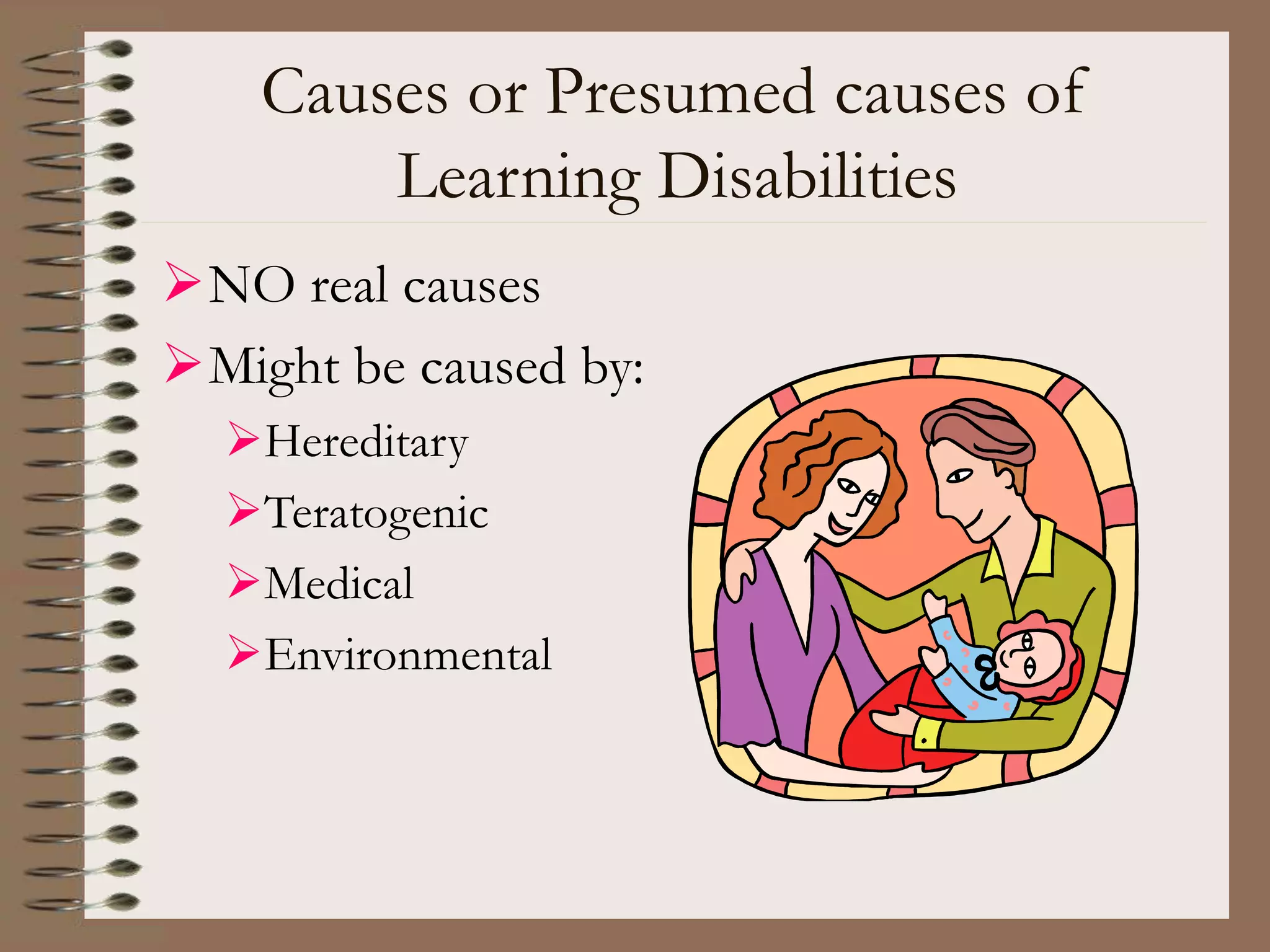
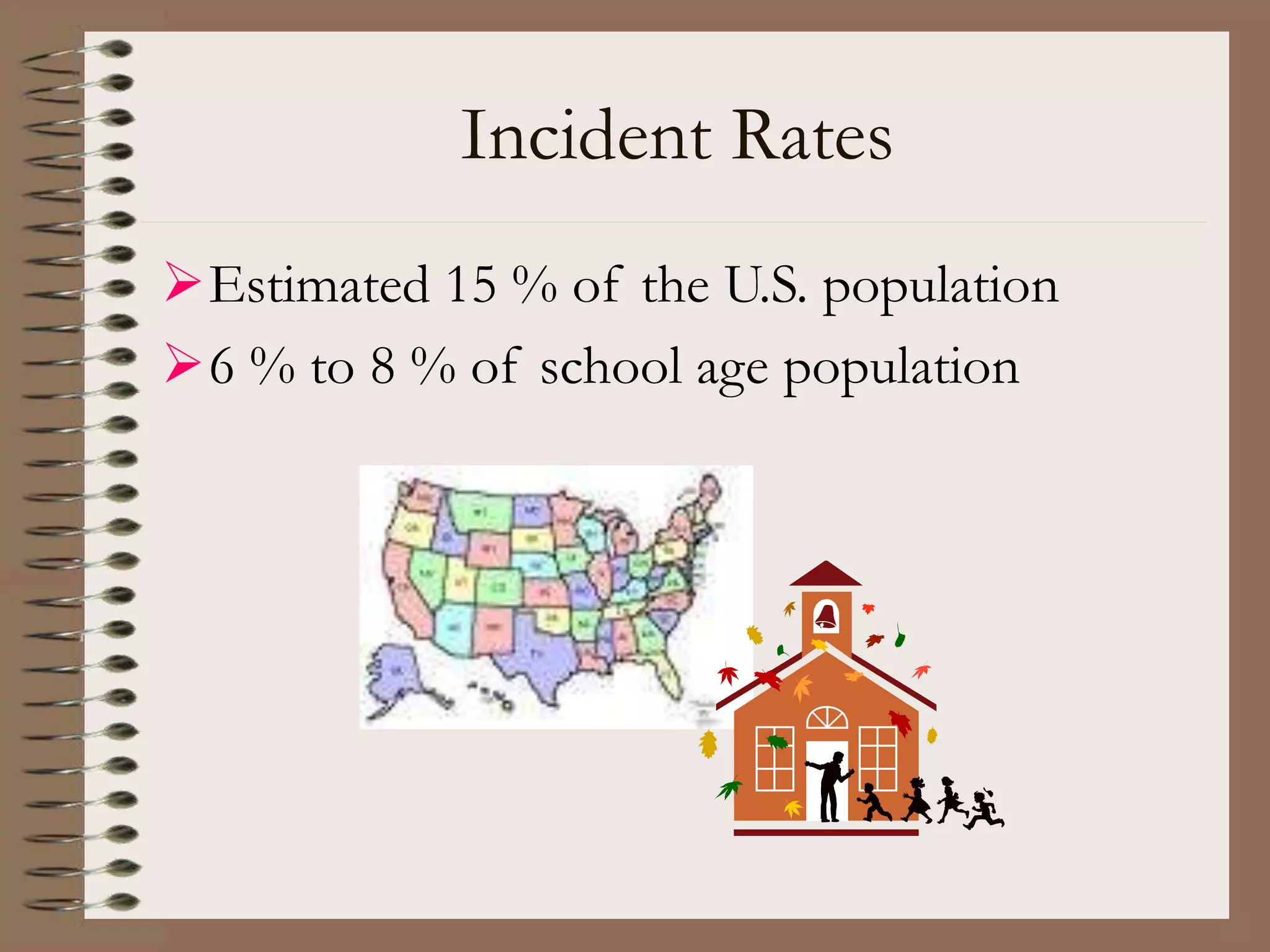
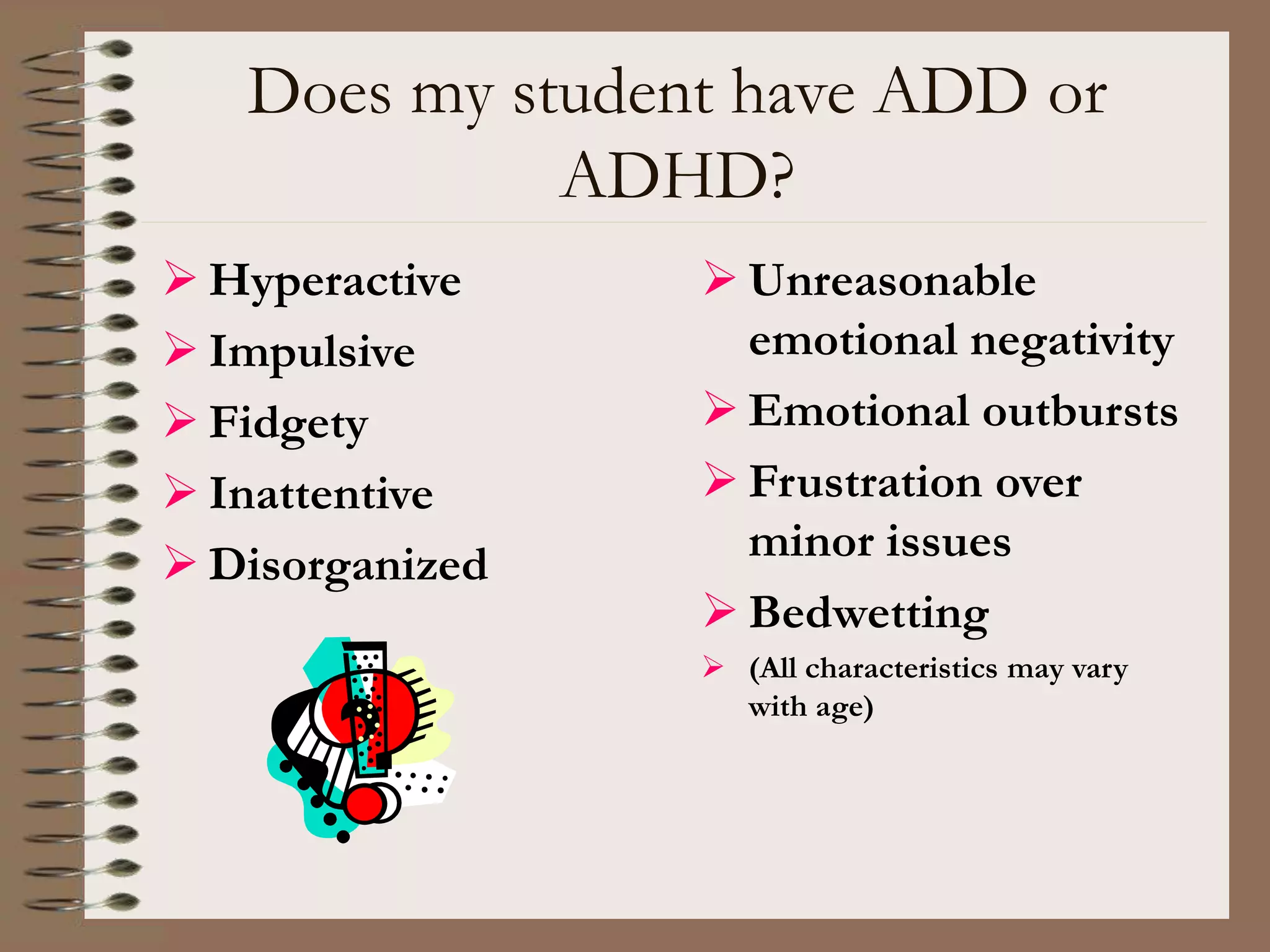
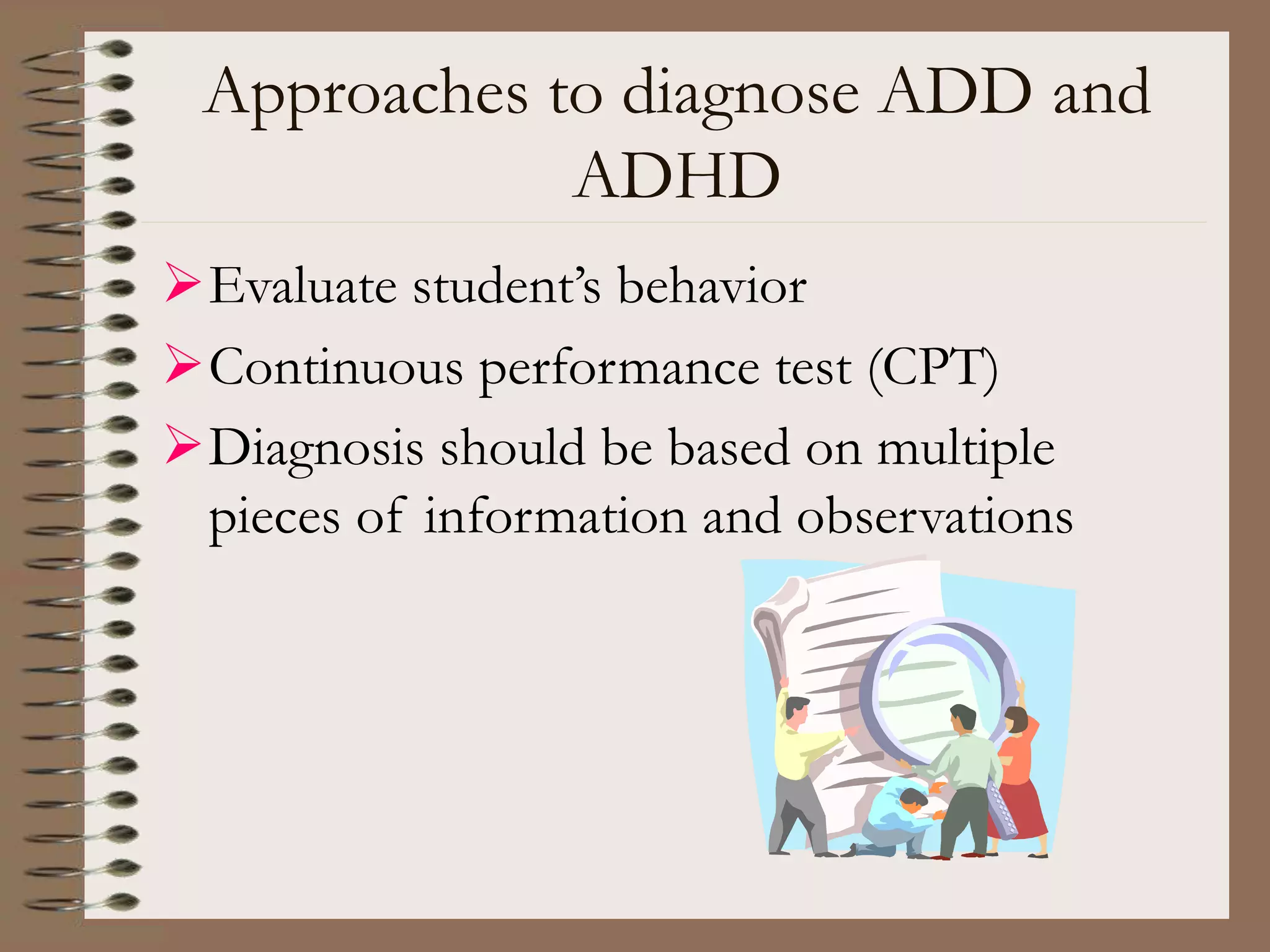

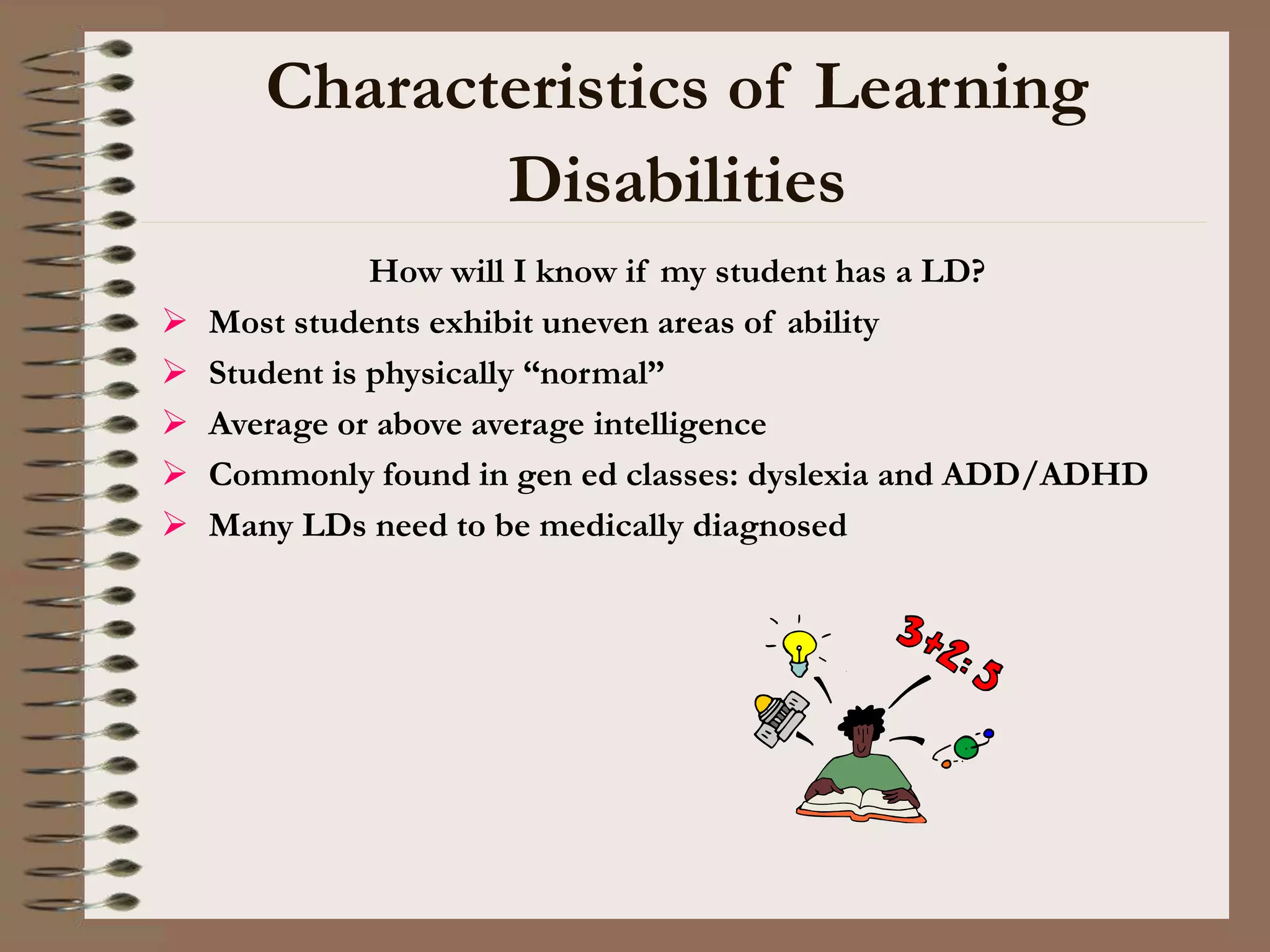
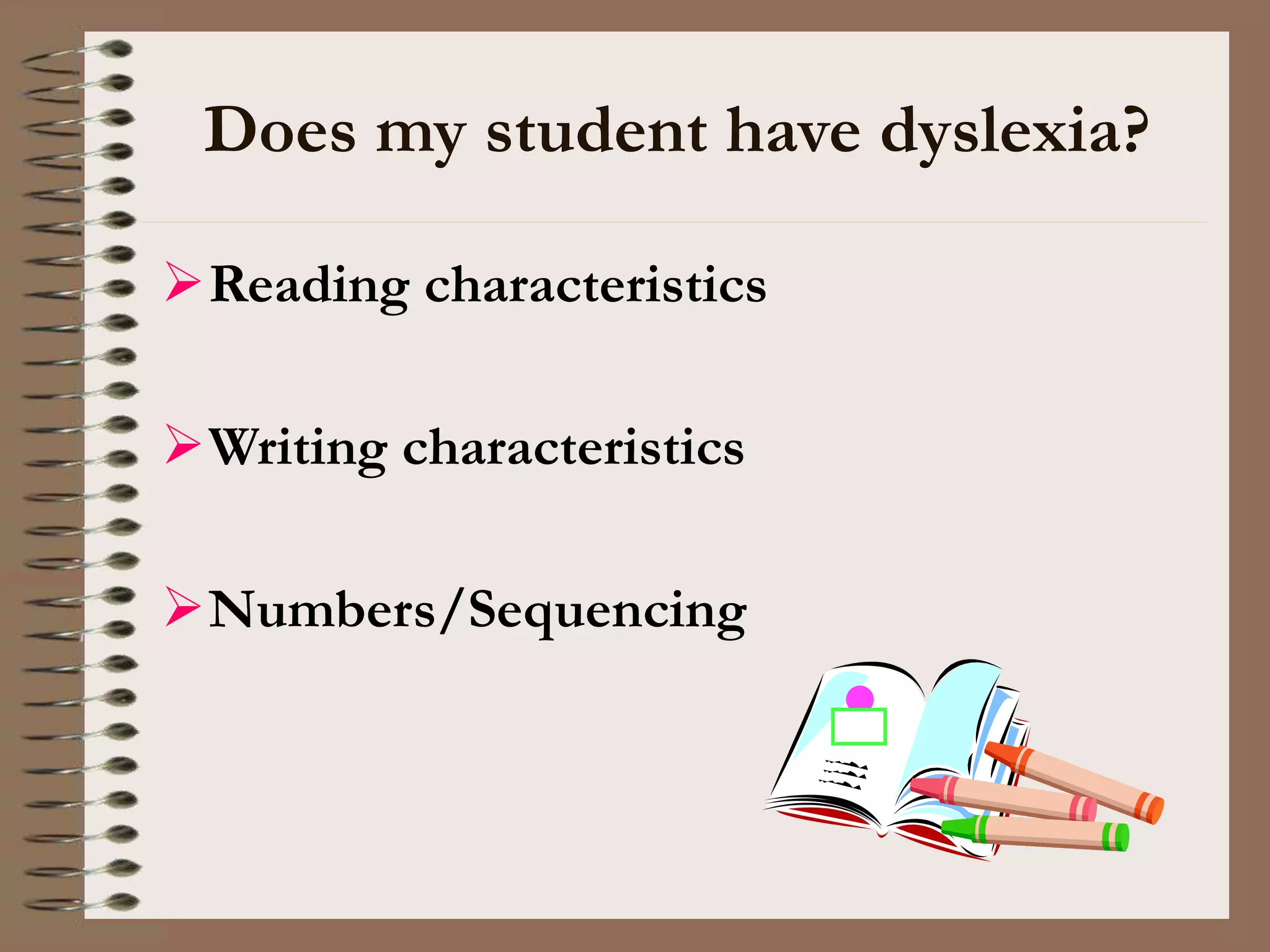
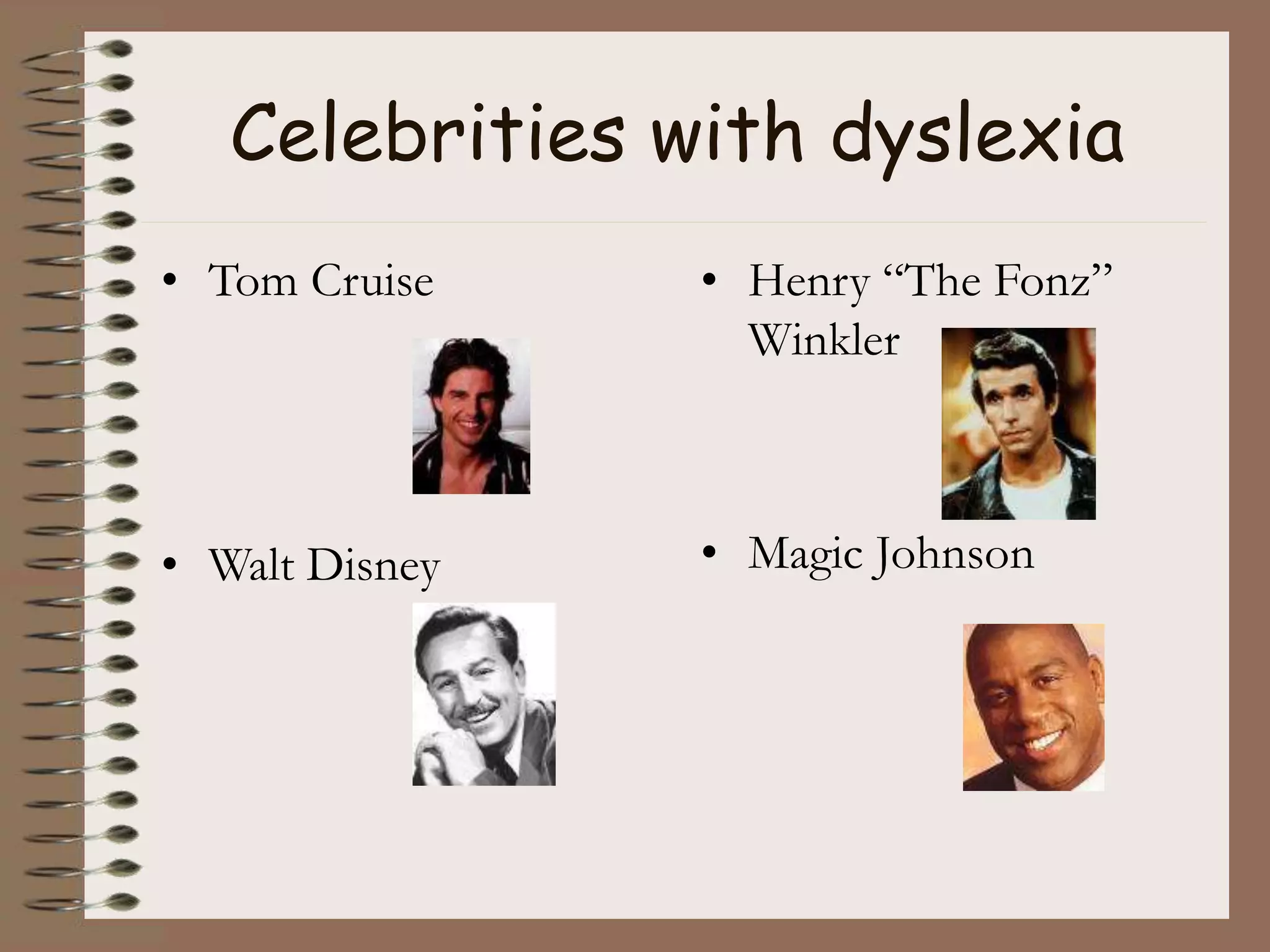
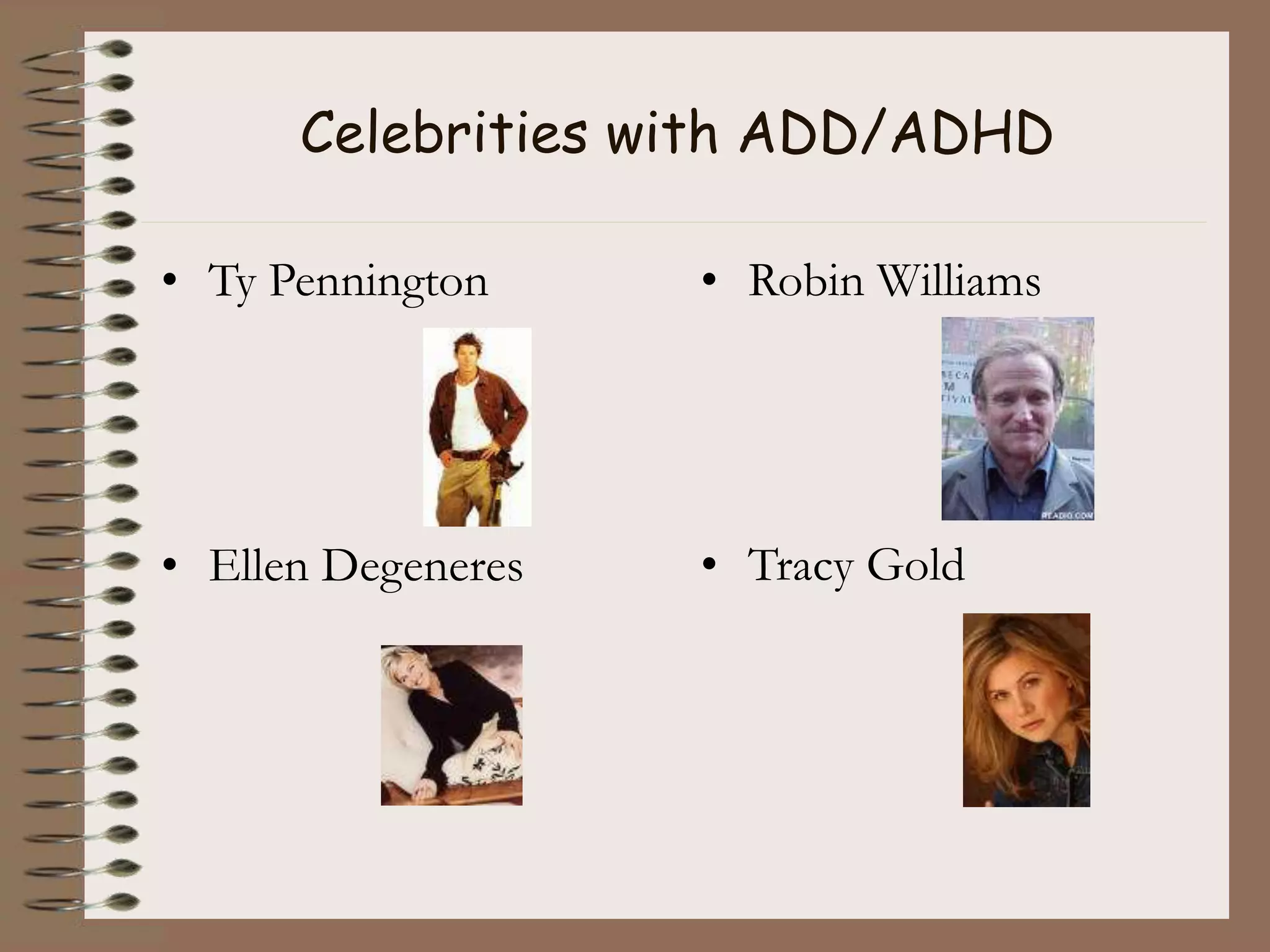
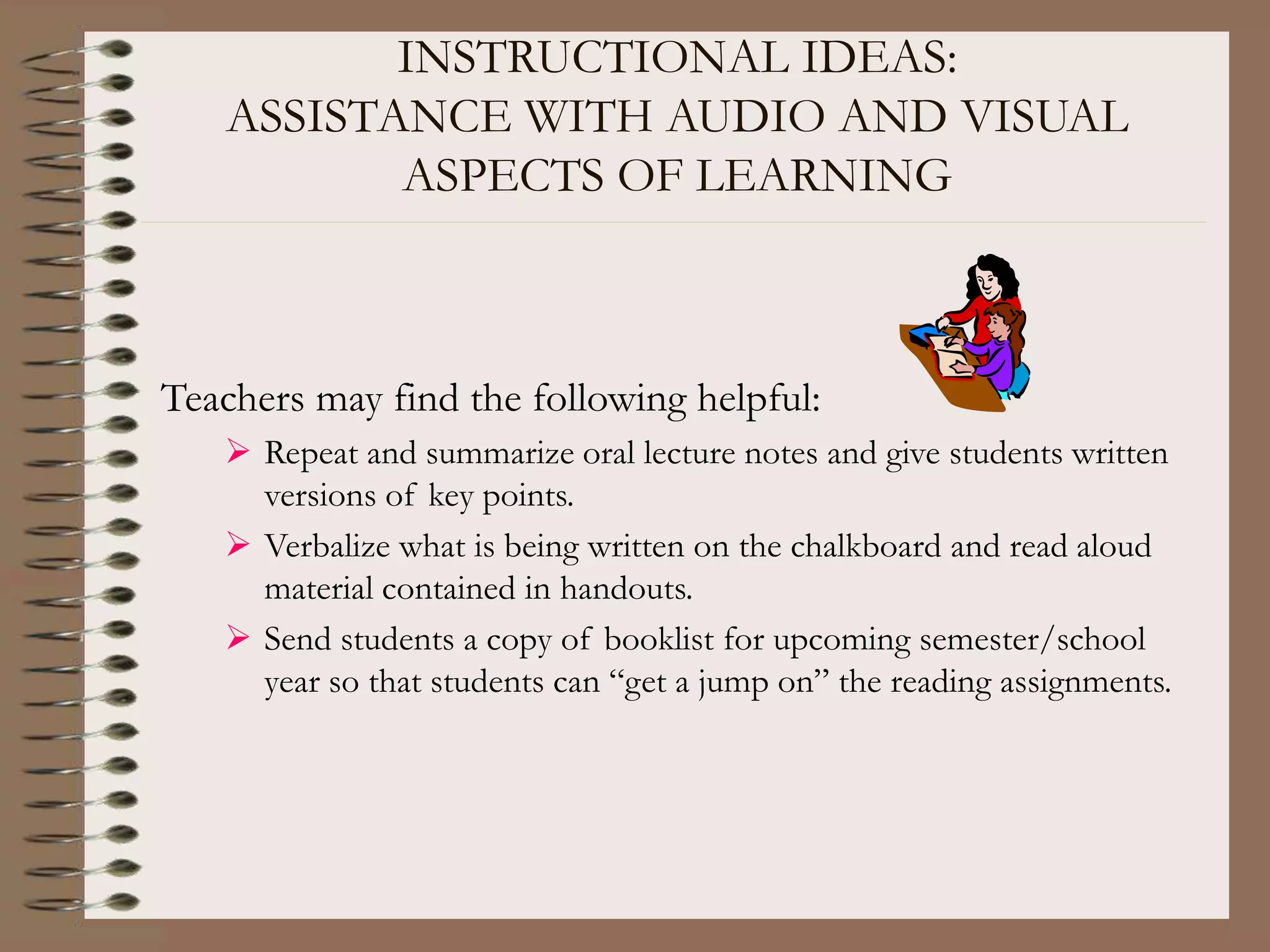
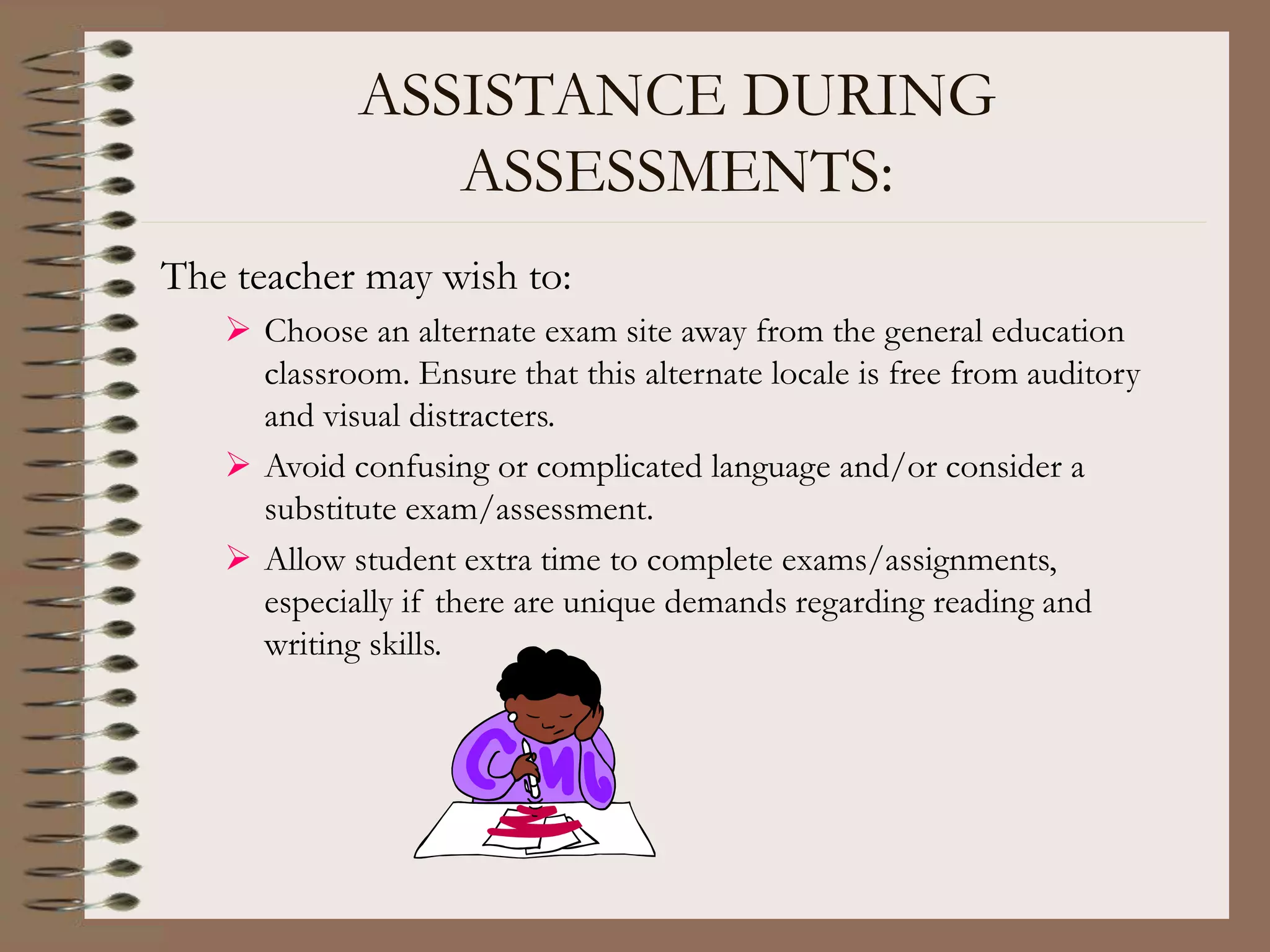

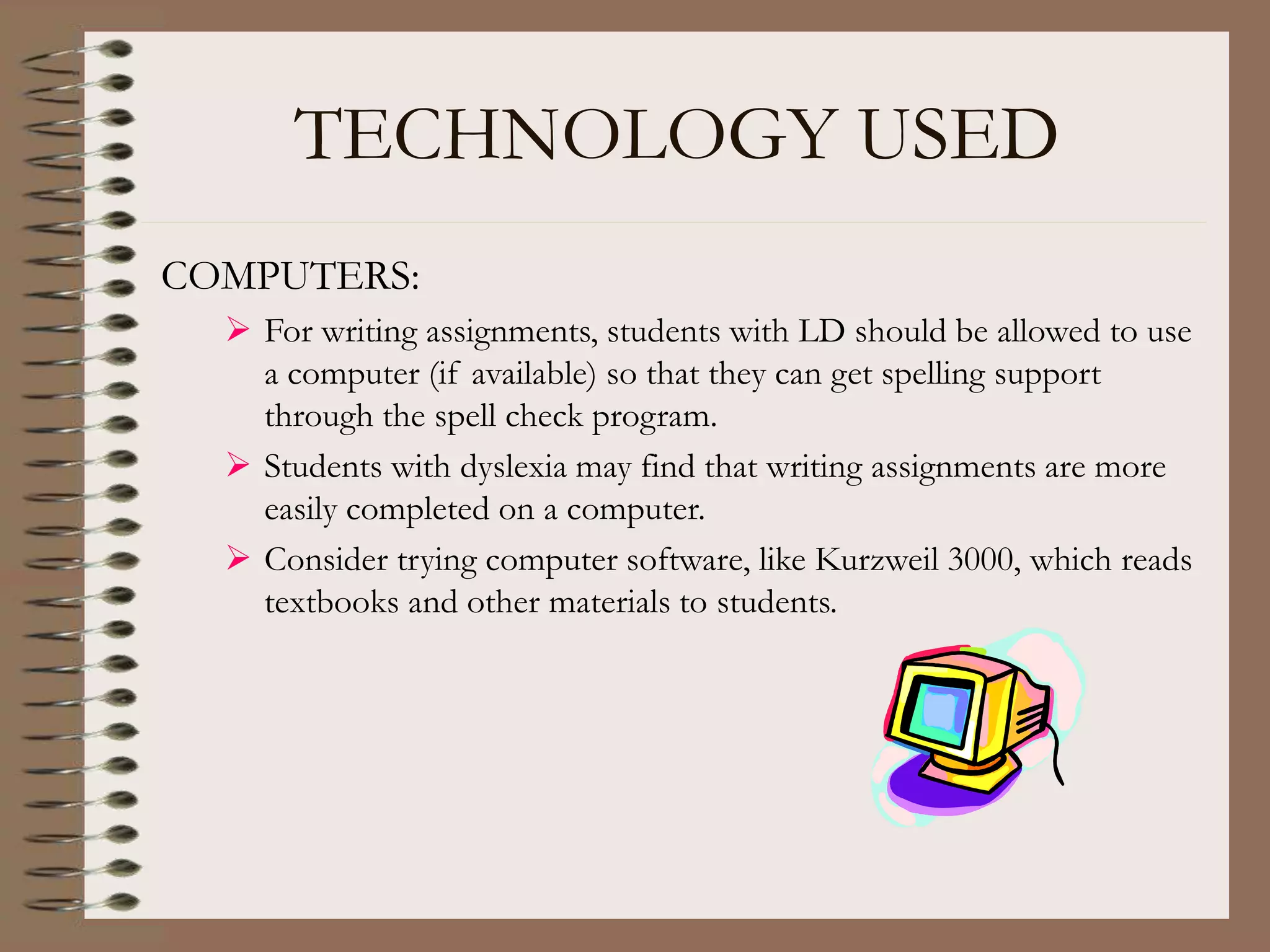
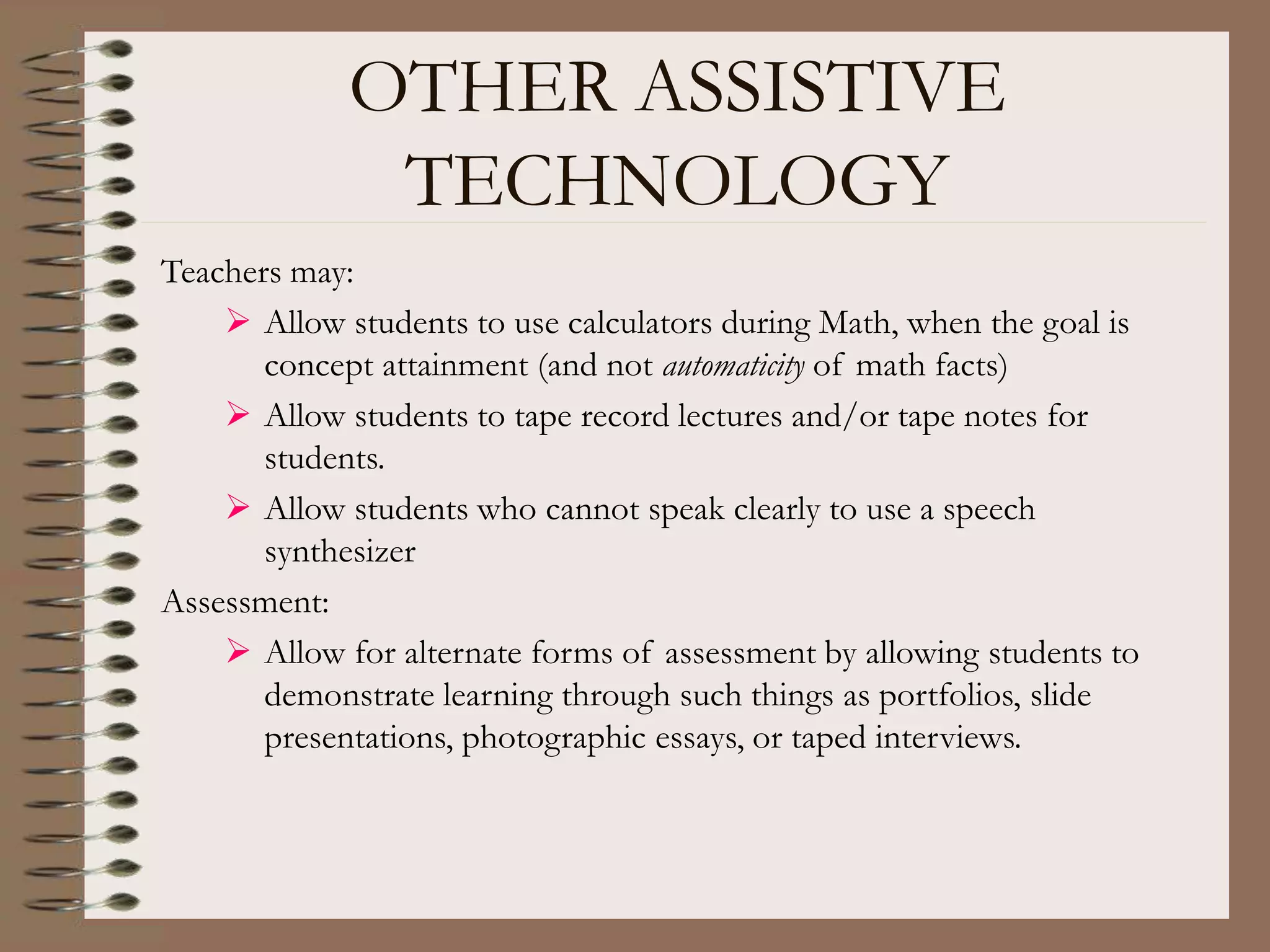
![INTERESTING TIDBITS
POTPOURRI
Because many people with dyslexia are right-brained thinkers, they
may be more artistic and creative, becoming poets, actors,
inventors, and artists.
Children with dyslexia use “almost five times as much brain area as
other children while doing a simple language task” (Silverstein et al.,
2001, p. 22).
“In the past, doctors…tried to prevent [children with disabilities]
from being born; they…also…tried to stop some [people with
disabilities] from having children of their own” (Flynn, 1998, p. 11).](https://image.slidesharecdn.com/learningdisabilitiespowerpoint-230807062845-3f3d3552/75/Learning-Disabilities-PowerPoint-ppt-18-2048.jpg)
![INTERESTING TIDBITS
EMOTIONAL ISSUES
Students with learning disabilities may suffer from
emotional problems/depression, and/or low
self-esteem. This may cause students to withdraw
from social interaction.
These same students may turn to drugs or alcohol for relief
from feelings of low self-worth.
As many as 35% of students with learning disorders,
drop out of High School (Girod, 2001, p. 31).
“Teenagers with dyslexia …[are] more likely to…think about
and to attempt suicide than other young people their age” (Landau, 2004, pp. 48-9).](https://image.slidesharecdn.com/learningdisabilitiespowerpoint-230807062845-3f3d3552/75/Learning-Disabilities-PowerPoint-ppt-19-2048.jpg)

